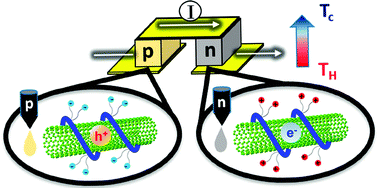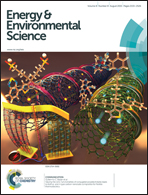Varying the ionic functionalities of conjugated polyelectrolytes leads to both p- and n-type carbon nanotube composites for flexible thermoelectrics†
Abstract
Single-walled carbon nanotubes can be selectively doped by conjugated polyelectrolytes (CPEs) to form either p- or n-type composites. The selectivity of charge-transfer doping is found to be dictated by the polarities of CPE pendant ionic functionalities. This finding leads to a fundamentally new approach to both p- and n-type solution-processable composites for high performance, flexible thermoelectric devices.


 Please wait while we load your content...
Please wait while we load your content...